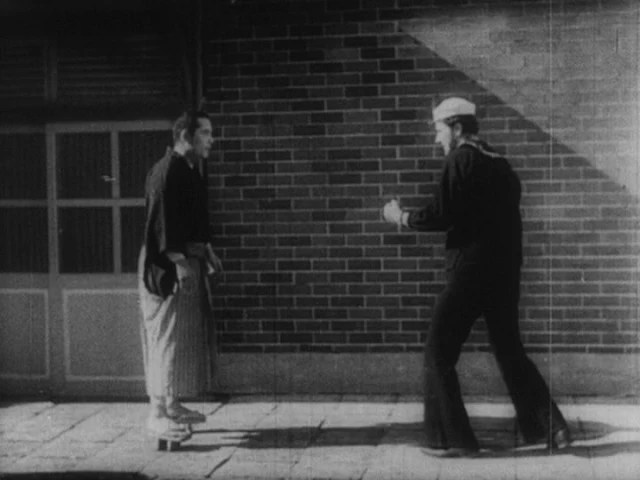 |
| Setsuko Wakayama and Toshiro Mifune in Snow Trail |
Snow Trail is the start of a famous collaboration, that of Akira Kurosawa and Toshiro Mifune. It was Mifune's first film, and he goes headlong into his handsome, brooding mode, playing a tough, ruthless bank robber on the run in the Japanese Alps. Kurosawa didn't direct the film, but wrote the screenplay and had a strong hand in working with director Senkichi Taniguchi. Though Mifune gets top billing and has probably the showiest role, the best performance in the film comes, as it often did, from Takashi Shimura, who would collaborate with Mifune and Kurosawa often over the next couple of decades. They would reunite almost immediately for Drunken Angel the next year. Mifune and Shimura have joined with a third robber, played by Yoshio Kusugi, in their flight into the mountains, which hasn't gone unnoticed by the police. After a brief stay at a popular spa, the trio head deeper into the snowy wilderness, where their plight becomes more desperate after Kusugi's character is killed by an avalanche. But they come across a small lodge run by an elderly man (Kokuten Kodo) and his granddaughter, Haruko (Setsuko Wakayama) for the benefit of mountain climbers. Only one climber, Honda (Akitake Kono), is currently staying there. It's the perfect hideout: The only contact with the outside world is by carrier pigeon (which Mifune's character swiftly kills). But when the barking of dogs alerts the robbers that their pursuers are drawing nearer, they decide to move on with the aid of Honda, the experienced climber, whom Mifune's character forces to be their guide by threatening to kill Haruko. The robber played by Shimura is beginning to have regrets, but he goes along with the plan until calamity puts the climbers in peril. It's a solid action drama, with some fine cinematography in the mountain wilderness. It gets a little sentimental in the scenes with Haruko and her grandfather -- there's a heavy-handed use of a record of, no kidding, "My Old Kentucky Home" -- but good performances keep it going.
